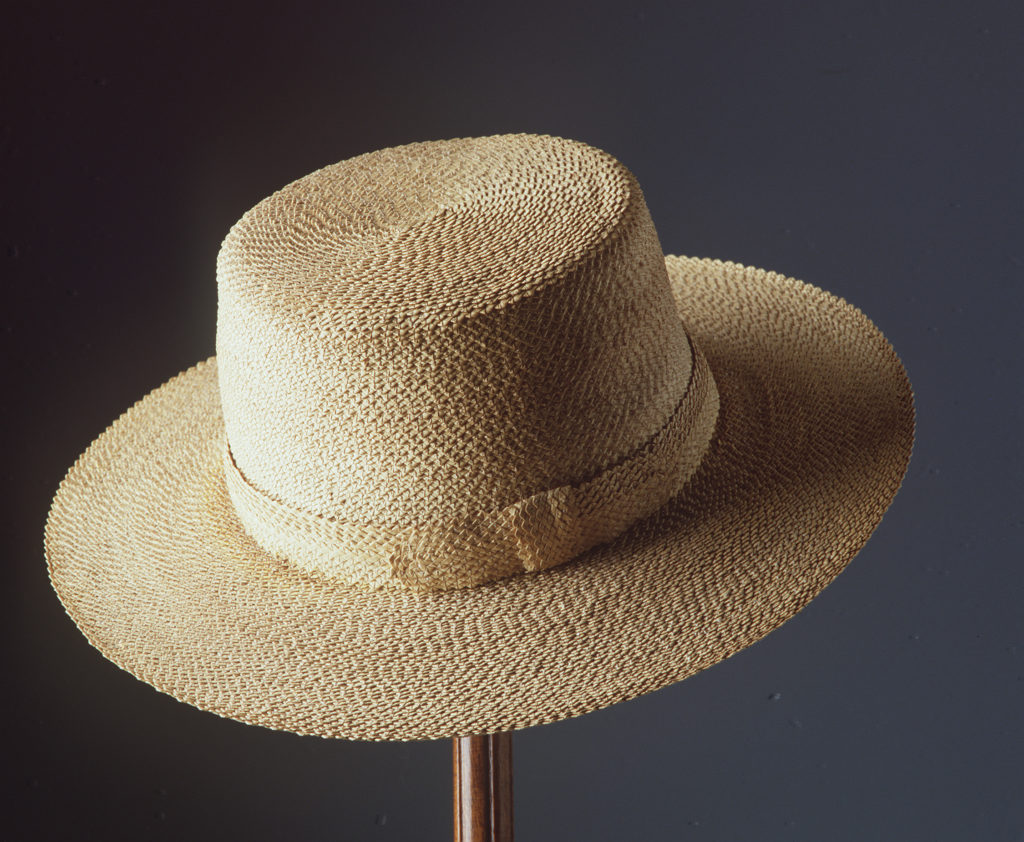
The Museum is excited to present Australian Men’s Style featuring 25 objects from the MAAS collection that touch on aspects of Australian men’s dress over a period of 200 years. From gentlemen’s attire in the early colonial period to post-World War II outfits and contemporary design, Australian Men’s Style will feature some of the milestones in the evolution of Australian menswear. This display will complement the Reigning Men: Fashion in Menswear, 1715-2015 exhibition opening on Wednesday 2 May until Sunday 14 October 2018.
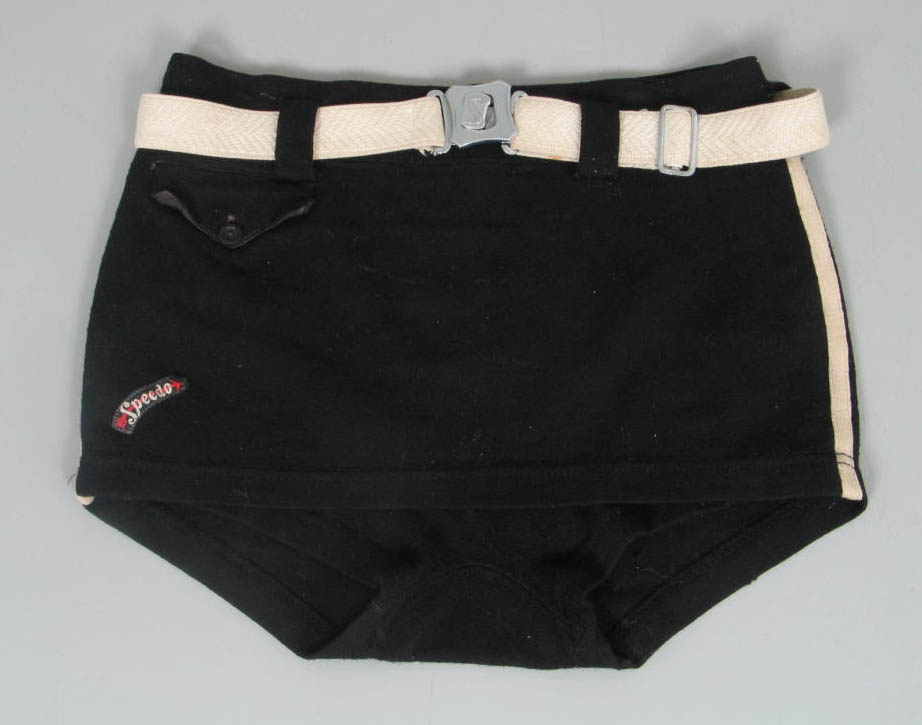
The staging of a display is a significant team venture, drawing on the expertise of staff across several departments at the Museum. Here I share with you just a few of the myriad tasks involved in the curatorial development process.
Collection research
When the Reigning Men: Fashion in Menswear, 1715-2015 exhibition from the Los Angeles County Museum of Art (LACMA) was negotiated for MAAS, the exhibition team discussed a programme of complementary activities and events. One idea encompassed developing a display highlighting examples of Australian men’s dress from the MAAS collection. This provided a wonderful opportunity to conduct a survey of the collection, understand its representation and distil its character. We trawled through hundreds of objects in the MAAS collection to find distinctive examples of Australian men’s dress and spent time reviewing these objects, narrowing them down to 25 and organising them into themes for contextualisation.
To aid the theme development process we used a variety of tools. Using a pin up board to visually group objects was particularly helpful when brainstorming themes and relationships between objects.
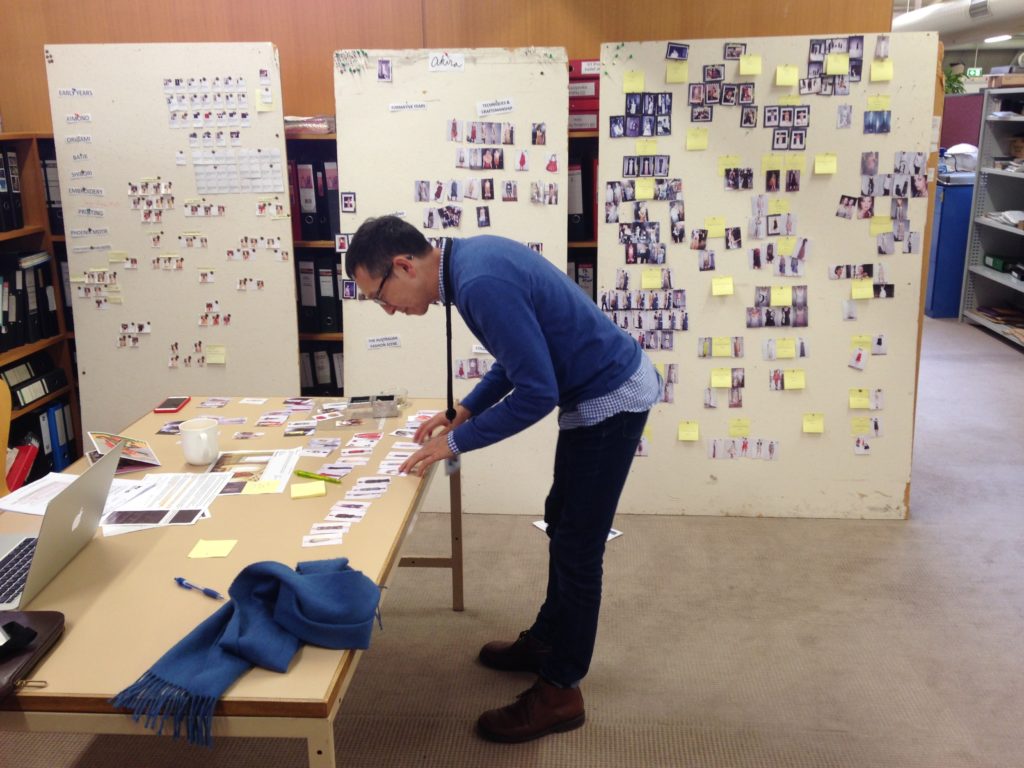
We also undertook research into each of the objects and compiled individual object files containing material sourced from Trove, online journal articles and websites, resources from the Museum’s Research Library and the Museum’s previous research material about the objects which is stored in what we call the object’s ‘blue file’.
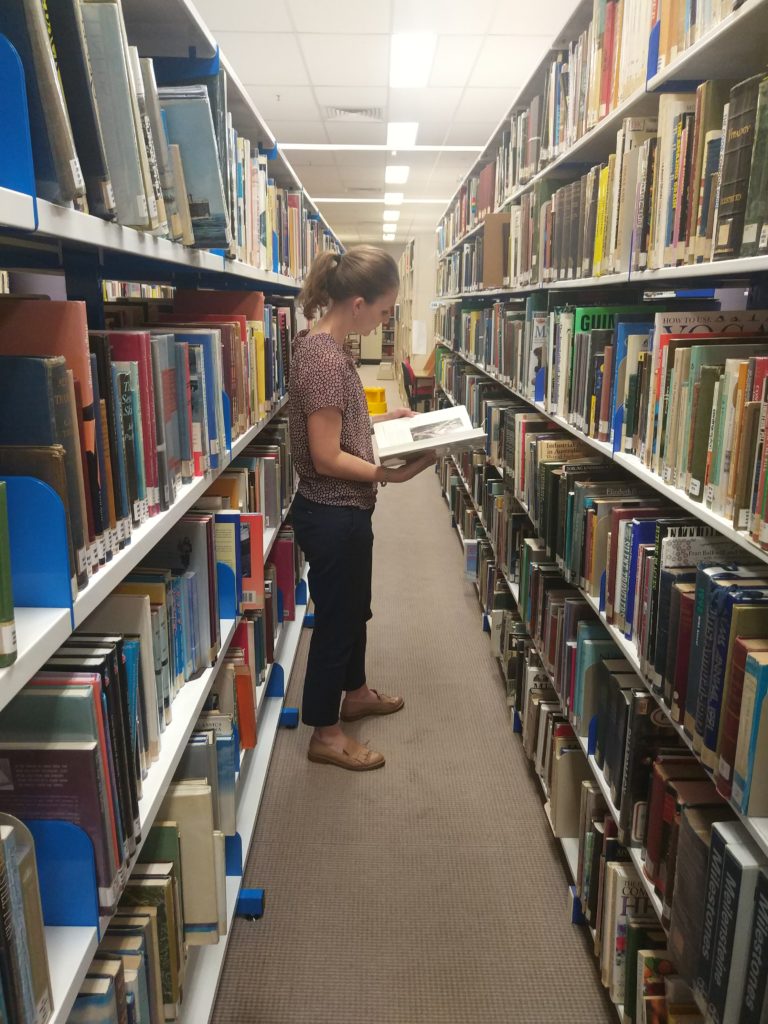
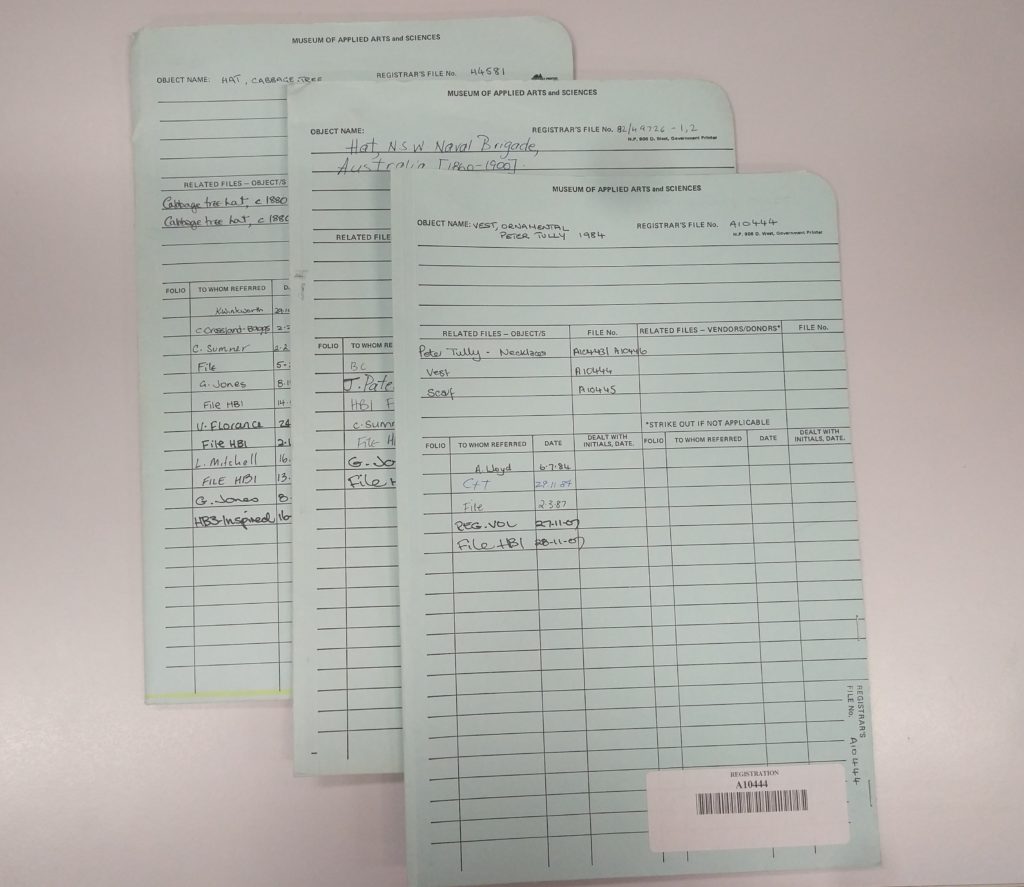
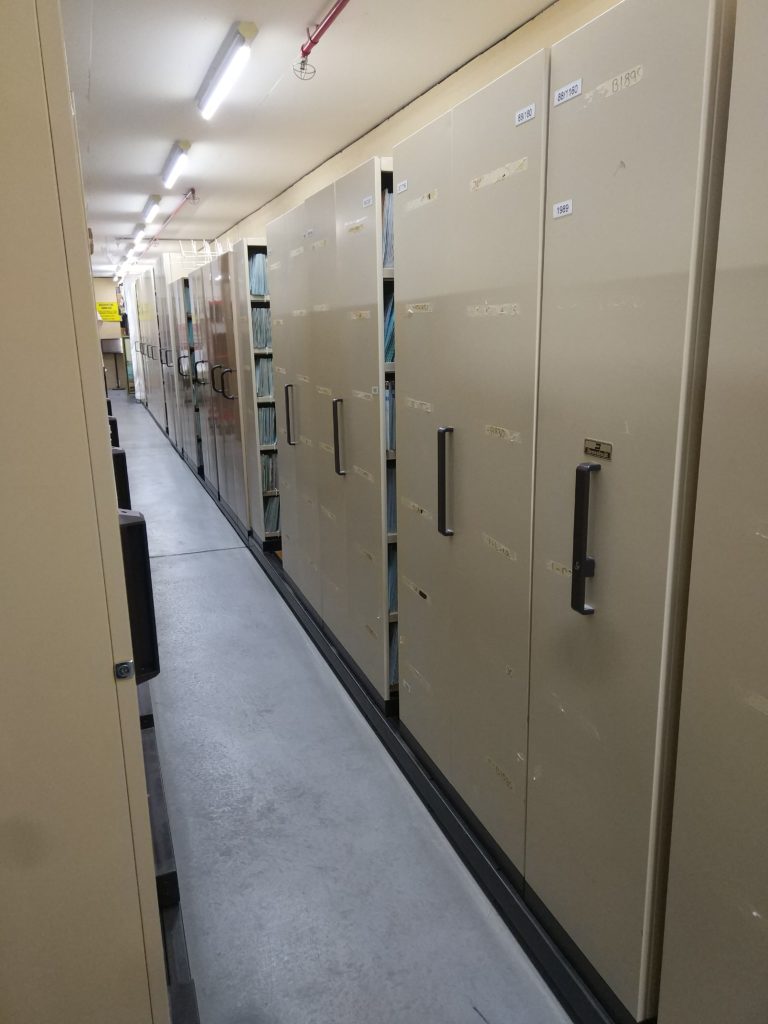
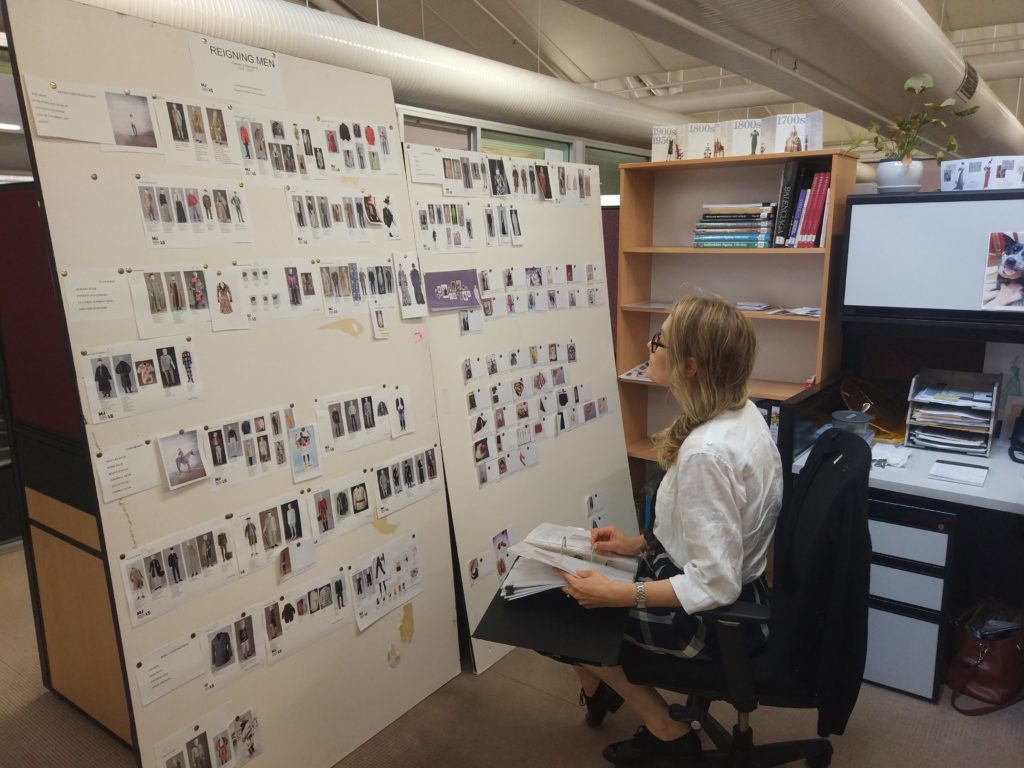
Design brainstorming
Of course, prior to confirming the object list, it was important to meet and liaise with colleagues from our Production, Design and Conservation teams to ensure that the objects were not only suitable and stable for display from a conservation perspective, but also fit within the showcases and aligned with the overall design aesthetic. We met with team members on several occasions to try out object layout ideas, discuss the object mounts and supports required for display, and ensure sufficient space was left for the object labels!
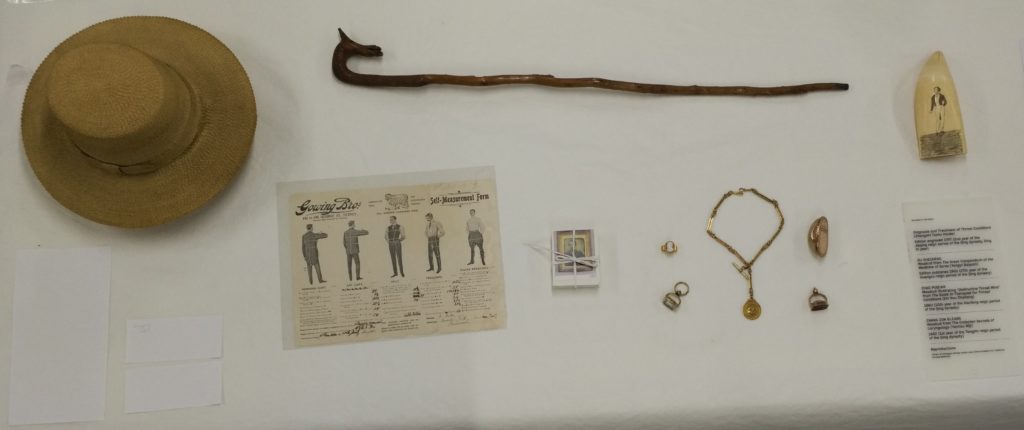
When pulling all of this information together to share with other teams across the organisation, we used PowerPoint to present exhibition concepts and convey design and object selection ideas and solicit feedback and input.
Label writing
The next interesting challenge involved condensing the wealth of object information we collected into concise label text. With usually about 50-70 words to work with, this can be a fiddly task, but very satisfying once complete! We worked closely with our Editorial team throughout this process, revising and refining the content.
We also needed to ensure the object materials, designer, place of manufacture and date period were listed briefly within each showcase. This can occasionally involve some thorough investigation into the object’s materiality or origin, which we’ll explore in an upcoming blog post.
With final label editing and object preparation underway we are looking forward to the construction and installation phases! Stay tuned for updates via social media regarding the opening to the public!
Written by Vanessa Thorne
#reigningmen
#powerhousemuseum
#centreforfashion
#ilovesydney
#mensstyle
This article gives an excellent insight into the different facets of work involved in putting together a museum exhibit! It sounds like both exhibits will be really interesting.
Thanks Karen, it’s such a varied and rewarding team process – we are excited to see the realisation too!